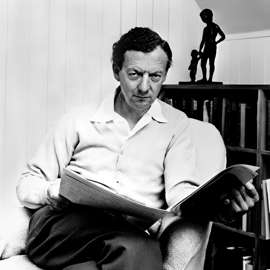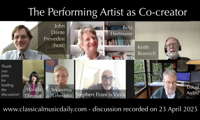 DISCUSSION: What is a work? John Dante Prevedini leads a discussion about The performing artist as co-creator, including contributions from Halida Dinova, Yekaterina Lebedeva, Béla Hartmann, David Arditti and Stephen Francis Vasta.
DISCUSSION: What is a work? John Dante Prevedini leads a discussion about The performing artist as co-creator, including contributions from Halida Dinova, Yekaterina Lebedeva, Béla Hartmann, David Arditti and Stephen Francis Vasta.
Beyond Earthly Existence
GIUSEPPE PENNISI reports on the International Chigiana Festival and Summer Academy
I went to Siena on 5-7 July 2022 for the initial concerts of the eighth edition of the International Chigiana Festival and Summer Academy. This year, the event extends until 3 September and is undoubtedly unique in Europe. It includes ninety concerts, with twenty-three world premieres, two opera productions (one of which was the first production in modern times of a Vivaldi opera), two concerts in Piazza del Campo, and a final section (in collaboration with the Salzburg Mozarteum) dedicated to the Baroque period after about seven weeks emphasising modern and contemporary music.
This edition has a theme and a title: From Silence, the sound of music that makes us come out of our silences. As with every previous year, there is a protagonist: Luigi Nono in the thirtieth anniversary year of his death. There is a very close link between the theme and the protagonist because Nono opened the dramaturgical conception of sound in modern music and, with it, the lexicon that makes it a key to read the world, even politically.
Nono's No hay cominos, hay que caminar ... Andrej Tarkovskij (1987) is the first part of the inaugural concert. Dated 1987, this is perhaps one of the most complete formulations of his poetics. It comes several years after Intolleranza 1960 and Al gran sole carico d'amore, works in which the voice and chorus are at the centre of the compositional process. In No hay cominos, hay que caminar ... Andrej Tarkovskij there are no voices but there are seven groups of instruments which Nono called 'choirs'. Two are on stage including strings, timpani, bass drum and trombones accompanied by another section, behind the audience, with strings, trombones, timpani and bass drum that are essentially the voices of protest and desires of the campasinos - the poor landless Latin American farmers. On both sides of the audience, there are four 'choirs' of three instruments and bongos arranged in mirror fashion. You can find feedback with, or memories of, Verdi's operas, especially those with more explicitly 'political' concertati, obviously with language very different from the nineteenth-century one, but no less fascinating.
The translation of the title is: 'O you who walk, there are no paths, there is to walk'. The path that Nono then took had three outlets: a Peruvian village in Caminantes ... Ayacucho, the director Tarkovskij in No hay caminos, hay que caminar ... Andrej Tarkovskij and finally the dream Hay que caminar sonando. Caminantes .... The text is by Giordano Bruno, someone who knew impossible paths. This journey, which leads to the Peruvian town, is one of the most ideologically clear that Nono has made. The ideal companion on the street, the sixteenth-century Dominican, is chosen for the common fight against hypocrisy, corruption, academicism, in short, against conformism. As always in Nono, not a syllable of the text reaches the listener.
The percussion marks the path with the rustles of all time but also with less usual lacerations, the strings (tuned in an unprecedented way, strings in unison but each violin tuned on a different tuning fork at a distance of micro-intervals) insinuate sharp blades, the brass intervene with dense and warm sound lumps. Twice, along the way, we come to the sadness of Requiem, of refined beauty and of an almost painful recollection. This work is rarely performed, because of its complexity. (In addition to the debut in Munich, we remember a 1992 Rai performance in Turin.) It was an ideal opening of a festival entitled From Silence. The concert piece found, in addition to a splendid director of contemporary music of world reknown - Yoichi Sugiyama, excellent young musicians in the ranks of the Chigiana and the Regional Orchestra of Tuscany which is accustomed to modern music.
The second part of the 5 July 2022 concert was Erwin Stein's 'chamber version' of Mahler's Fourth Symphony. This version is gradually entering the repertoire, also in Italy: it was, for example, the work with which the Verdi Orchestra of Milan inaugurated its 2021-2022 season. It is juxtaposed with Nono's work because, unlike Mahler's other symphonies, this is a hymn, if not to joy, to serenity, going – as Bruno Walter wrote – beyond earthly existence. The torment and political emphasis (but with few illusions and almost hopeless) of Luigi Nono is contrasted with one of Gustav Mahler's rare compositions impregnated with serenity. In this symphony, he gives life to a vision of special purity and innocence, almost childlike: the final Lied Wir geniessen die himmlischen Freuden (Let's enjoy heavenly joy), taken from Des Knaben Wunderhorn, with angels baking bread, St Peter going fishing and the light sense of the dance of eleven thousand virgins. In the 'chamber version', everything is more intimate. In the lied of the fourth movement, the whole voice of soprano Sarah Wegener is protagonist; she had special applause from an audience that filled the auditorium: a Church at the same time neoclassical and baroque, closed to worship since the Napoleonic era.
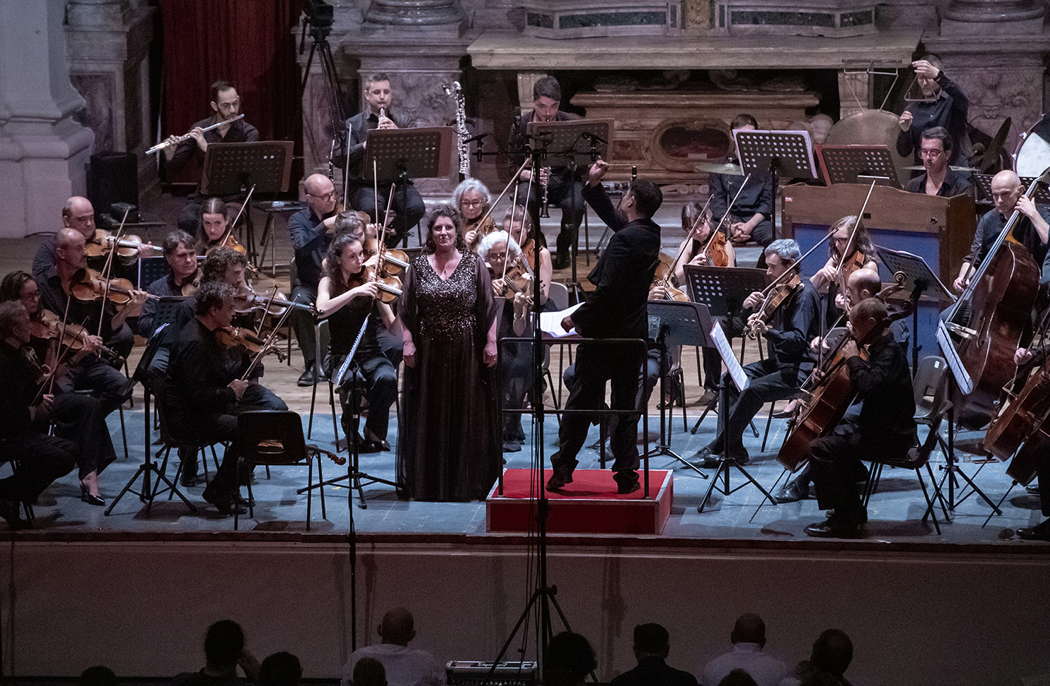
Sarah Wegener and colleagues performing the Mahler's Fourth Symphony with conductor Yoichi Sugiyama. Photo © 2022 Roberto Testi
At the same time, however, listeners who appreciate Mahler know that this is perhaps the Bohemian composer's last moment of serenity. Within a few years, the betrayals of those he considered his friends forced him to leave the direction of the Vienna State Opera: in addition, he had ever-growing doubts about the fidelity of his wife as well as the growing certainties that heart disease would condemn him to a short life. These determinants made him, in his most private sphere, gloomy and tormented like Nono in No hay caminos, hay que caminar ... Andrej Tarkovskij.
It is, therefore, not only a juxtaposition but also a warning to the audience of the connection between the late Romantic Bohemian and the Venetian of the second half of the twentieth century.
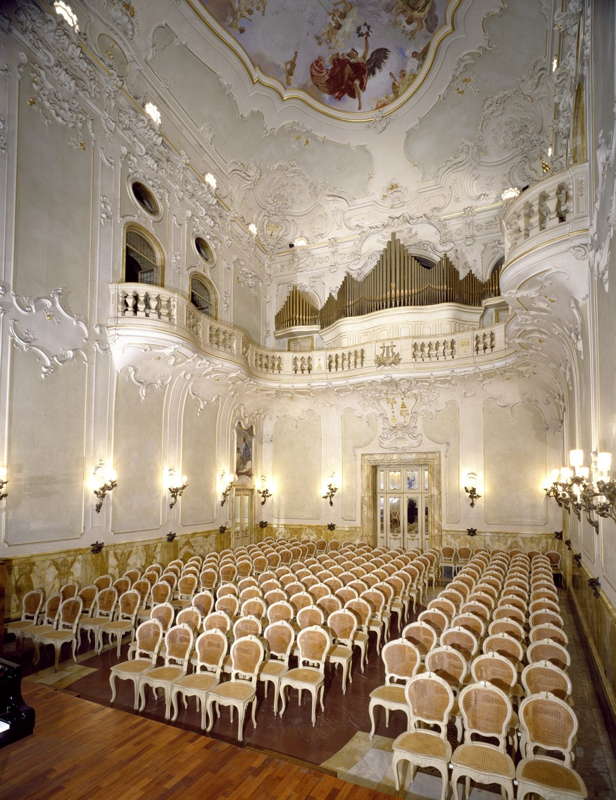
The Salone Concerti at Palazzo Chigi Saracini in Siena, Italy. Photo © 2014 Len Silni
The second concert, on Wednesday 6 July 2022, was in the splendid hall of Palazzo Chigi Saracini, built for the Festival ninety-nine years ago. It is a joy to listen to chamber music within those walls and under those frescoes. The evening was dedicated to the Quartetto Prometeo (which this magazine has dealt with several times, recently as part of the complete Shostakovich quartets organized by the Roman Philharmonic Academy). However, only one of the three pieces was strictly speaking a quartet; the first a solo; the third a quintet in which Giuseppe Ettorre (of the Scala orchestra) joined the quartet. As in the first concert of this Festival, the first part is dedicated to the innovation of the second half of the twentieth century, while the second to the new 'national' music schools that emerged in Central and Eastern Europe at the end of the nineteenth century.
Manto (1957), the piece that opened the concert, almost contemporary with the Four Pieces on a Single Note, is perhaps the best known composition by Giacinto Scelsi, who did not consider himself a musician but a scholar of oriental religions and philosophies with some amateur excursions into the world of the pentagram. Manto is a solo for violist and voice, that is the violist Danusha Waskiewicz, with a voice more like a mezzo than a soprano, accompanies the sound of the instrument. In short, a hum hum - but classy.
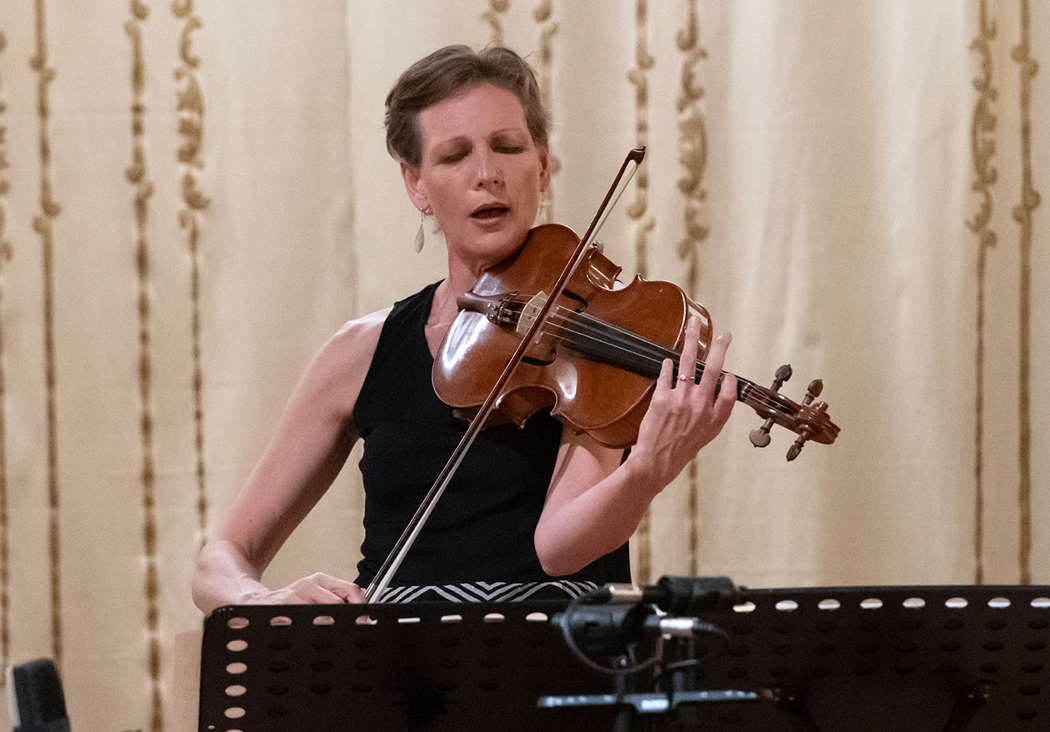
Danusha Waskiewicz performing Scelsi's Manto. Photo © 2022 Roberto Testi
John Cage's String Quartet in Four Parts (dated 1950) is one of many compositions inspired by the four seasons, in this case presented from summer to spring. There is a brief reference to Vivaldi at the beginning of the fourth movement (Spring), but the piece is pure style of the period in which Cage considered himself 'post-romantic'. They are misty seasons in whose colours dominate the half-tints.
Antonín Dvořák's String Quintet No 2 is different, with the double bass taking on a central role. The initial Allegro con fuoco opens with a pianissimo of a few bars, followed by a brilliant and whimsical theme of Slavic intonation. The musical discourse ends with a festive handshake between all five instruments. The Scherzo, which is a lively Allegro, is the Quintet's second movement. Here the popular Dvořák emerges. There is also a Trio indicated by a beautiful phrase of the first violin, with some elegant variation and restatement of the main theme in the context of a 'da capo' of the Scherzo. The Poco andante is marked by a lyricism, in which the expressive line of the first violin is highlighted, while the double bass is present with a series of delicate pizzicati. The final Allegro molto has a dense and tight writing clearly highlighted by the Quartetto Prometeo expanded with Giuseppe Ettorre.
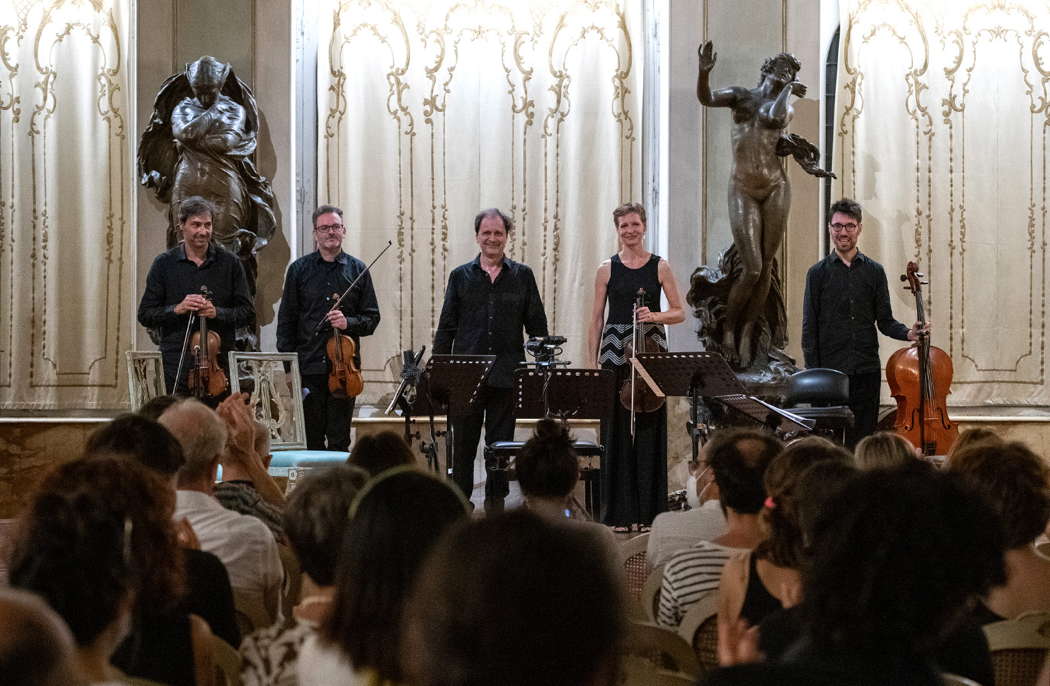
Applause for Giuseppe Ettorre (centre) and Quartetto Prometeo at the end of Dvořák's String Quintet No 2. Photo © 2022 Roberto Testi
There were many young people in an audience which applauded with enthusiasm.
Copyright © 9 July 2022
Giuseppe Pennisi,
Rome, Italy



